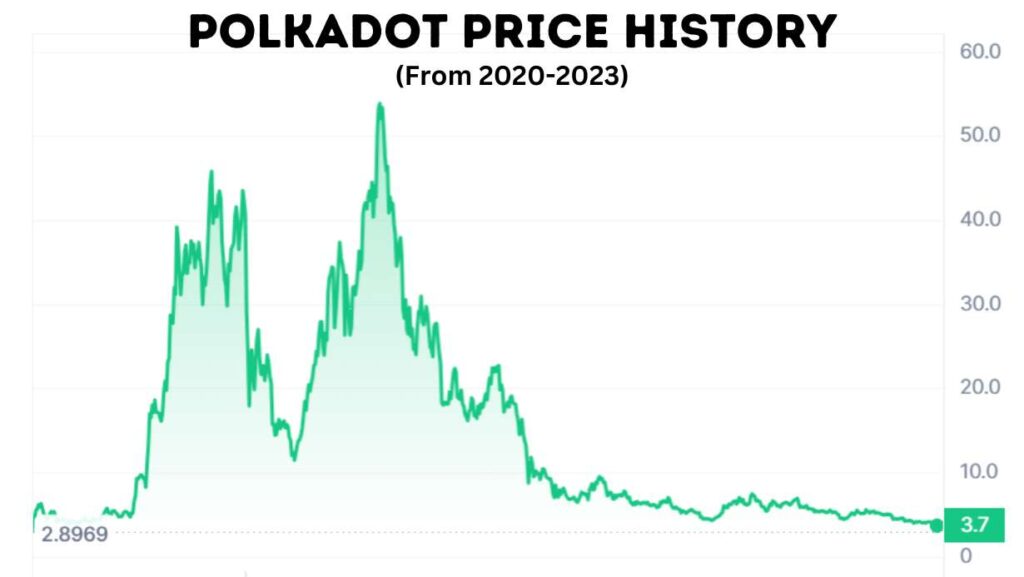Cryptocurrency has taken the financial world by storm, and one project that’s making waves is Polkadot. With its unique approach to blockchain technology and its growing ecosystem, Polkadot Crypto has become a significant player in the crypto space.
What is Polkadot Crypto?
Polkadot is a next-generation blockchain platform designed to connect different blockchains and enable them to communicate and share information. Founded by Dr. Gavin Wood, one of the co-founders of Ethereum, Polkadot’s primary goal is to create a decentralized and interoperable web, commonly referred to as Web 3.0.
The Technology Behind Polkadot Crypto
Polkadot’s core technology is built around the relay chain, parachains, and bridges. The relay chain serves as the backbone of the network, securing the entire ecosystem. Parachains are individual blockchains connected to the relay chain, each serving a specific purpose. Bridges facilitate communication between Polkadot and other blockchains, making it possible for data and assets to move seamlessly.
Polkadot’s Unique Features
- Interoperability: Polkadot’s key feature is its ability to interconnect blockchains. This allows different projects to work together, improving overall efficiency and communication.
- Scalability: The network can adapt and grow by adding new parachains, ensuring it can handle an increasing number of transactions.
- Governance: Polkadot uses a unique governance model, allowing token holders to make decisions collectively, and promoting a decentralized approach.
The Polkadot Ecosystem
Polkadot’s ecosystem is thriving, with various projects and parachains being built on the platform. Some notable projects include Acala, Moonbeam, and Kusama. These projects extend the functionality of Polkadot and provide unique use cases.
Key Components of Polkadot Crypto

Understanding the core components of Polkadot is essential to grasp its significance in the crypto world.
Relay Chain
The relay chain is the heart of the Polkadot network. It is responsible for the network’s security and coordination. Think of it as the central nervous system of the Polkadot ecosystem, ensuring that all parachains communicate effectively.
Parachains
Parachains are specialized blockchains that connect to the relay chain. They can be customized to serve various purposes, from smart contracts to decentralized applications (DApps). Parachains share security and consensus mechanisms with the relay chain, making them interoperable.
Bridges
Polkadot’s compatibility extends beyond its ecosystem. Bridges are connectors that link Polkadot to other blockchains, such as Ethereum or Bitcoin. This allows assets and data to move seamlessly between different networks.
Nominators and Validators
Nominators and validators play a crucial role in securing the network. Validators create new blocks, while nominators support validators by staking their DOT tokens. This democratic approach ensures the network’s security.
Governance
Polkadot has a built-in governance system that enables token holders to propose and vote on changes to the network’s parameters. This ensures that the ecosystem remains adaptable and evolves according to the community’s needs.
How to Buy Polkadot Crypto
Now, let’s get to the heart of the matter – how to buy Polkadot.
Choosing a Cryptocurrency Exchange
The first step is to select a reputable cryptocurrency exchange that supports Polkadot. Some popular options include Binance, Kraken, and Coinbase. Research each exchange thoroughly, considering factors like fees, security, and user experience.
Creating an Account
Once you’ve chosen an exchange, you’ll need to create an account. This usually involves providing your email address, creating a password, and agreeing to the platform’s terms of service.
Verification Process
Most exchanges require identity verification to comply with regulatory standards. You may need to provide personal information and documents like your ID or passport. This step is essential for security and legal purposes.
Depositing Funds
With your account set up and verified, it’s time to deposit funds. Each exchange will have its funding options, which may include bank transfers, credit/debit card payments, or even other cryptocurrencies. Choose the method that suits you best and follow the instructions.
Placing an Order
Once your funds are in your exchange account, you can place an order to buy a Polkadot. You can choose between market orders (buying at the current market price) or limit orders (specifying a price at which you want to buy). Be mindful of fees and make sure you double-check your order details before confirming.
Storing Your Polkadot Crypto
After purchasing Polkadot, it’s essential to think about where and how you’ll store it.
- Types of Wallets: There are various types of wallets available, including hardware wallets, software wallets, and mobile wallets. Research each type and choose the one that aligns with your security preferences.
- Setting Up a Wallet: Once you’ve selected a wallet, follow the setup instructions carefully. Make sure to back up your wallet’s recovery phrase and store it securely. Losing access to your wallet can result in losing your Polkadot.
- Security Considerations: When dealing with cryptocurrencies, security should be your top priority. Use strong passwords, enable two-factor authentication, and stay vigilant against phishing attempts and scams.
Staking Polkadot Crypto
Staking is a way to earn passive income with Polkadot. By locking up your DOT tokens in the network, you can participate in securing the ecosystem and be rewarded with additional tokens.
How to Stake Polkadot Crypto
Staking Polkadot is a straightforward process. Here are the general steps to get started:
- Acquire DOT Tokens: You’ll need DOT tokens to stake. You can purchase them on various cryptocurrency exchanges.
- Choose a Staking Wallet: Select a compatible wallet for staking, ensuring it supports Polkadot.
- Transfer DOT Tokens: Send your DOT tokens to your staking wallet.
- Delegate Your Tokens: Delegate your tokens to a validator or nominate your preferred validators.
- Start Earning Rewards: Sit back and watch as your staked tokens generate rewards.
Polkadot Crypto Price History
Polkadot’s native token, DOT, had its initial coin offering (ICO) in May 2020. During this ICO, Polkadot raised a substantial amount of funds. However, its initial trading price was relatively modest. DOT started trading at around $0.30 and experienced minimal volatility in its early days.
Polkadot’s Price Surge in 2021
The year 2021 witnessed a remarkable surge in the price of Polkadot. It went from trading at around $5 at the beginning of the year to reaching an all-time high of over $53 in May. This surge was partly due to the increased interest in the Polkadot ecosystem and the overall bull market in cryptocurrencies.

Polkadot’s Competitors
While Polkadot has unique features, it faces competition from other blockchain projects like Ethereum, Cardano, and Binance Smart Chain. Understanding the competitive landscape is essential for investors.
Polkadot’s Roadmap
Polkadot has an ambitious roadmap, including the rollout of parachains, governance enhancements, and further scalability improvements. Following these developments is vital for staying updated on the project’s progress.
Polkadot Crypto: Risks and Challenges
Investing in cryptocurrencies, including Polkadot, comes with risks. Volatility, regulatory changes, and security issues are some of the potential challenges.
Future Outlook
Polkadot’s innovative approach to blockchain technology and its expanding ecosystem make it an exciting project to watch. As blockchain technology evolves, Polkadot is likely to play a significant role in shaping the future of the internet.
Conclusion
In conclusion, Polkadot is not just another cryptocurrency but a groundbreaking project with the potential to revolutionize how blockchains interact. Its unique features, growing ecosystem, and ambitious roadmap position it as a top contender in the crypto space. As you consider your investment options, keep a close eye on Polkadot’s developments and the broader blockchain landscape.
FAQs
How can I stake Polkadot and earn rewards?
You can stake Polkadot by locking up your DOT tokens in the network, and in return, you will earn additional tokens as rewards.
What are some notable projects within the Polkadot ecosystem?
Notable projects in the Polkadot ecosystem include Acala, Moonbeam, and Kusama, each contributing to the platform's functionality.
What are the risks associated with investing in Polkadot?
Risks include price volatility, regulatory changes, and potential security vulnerabilities. It's important to conduct thorough research.
How does Polkadot's governance model work?
Polkadot's governance model allows token holders to make decisions collectively, ensuring a decentralized approach to network management.
See Also: What are Non-Fungible Tokens (NFTs)? An Ultimate Guide to Unique Digital Assets










